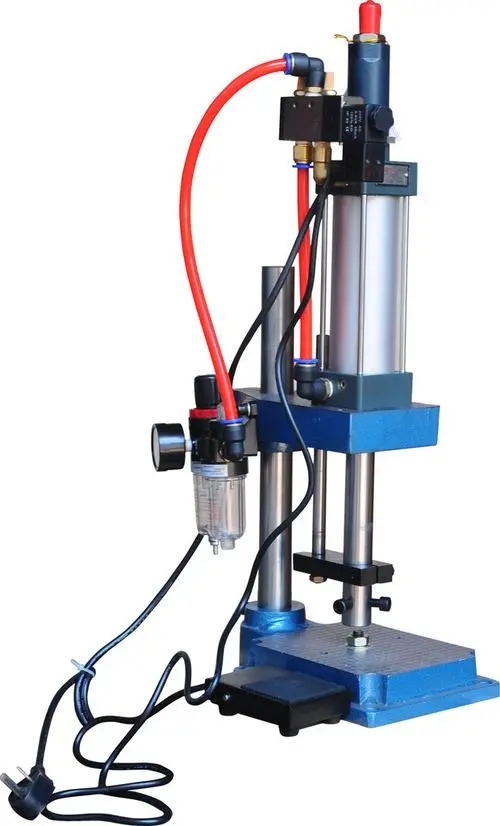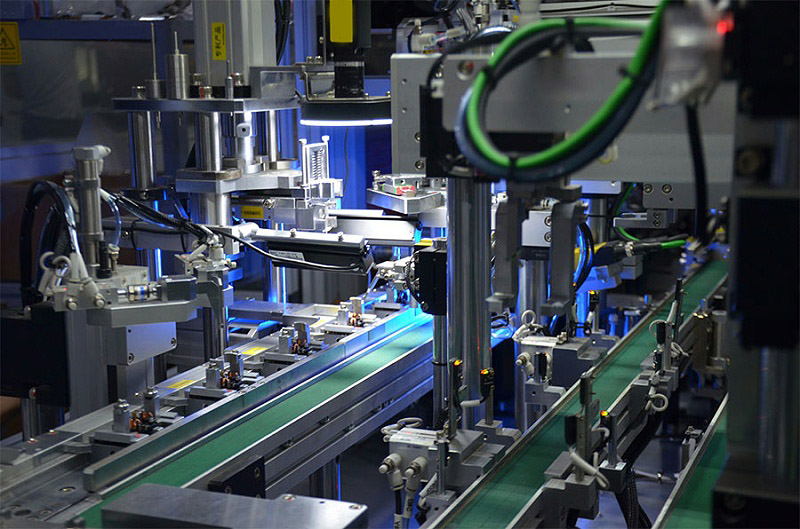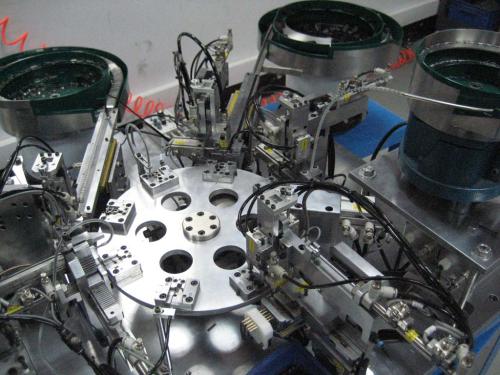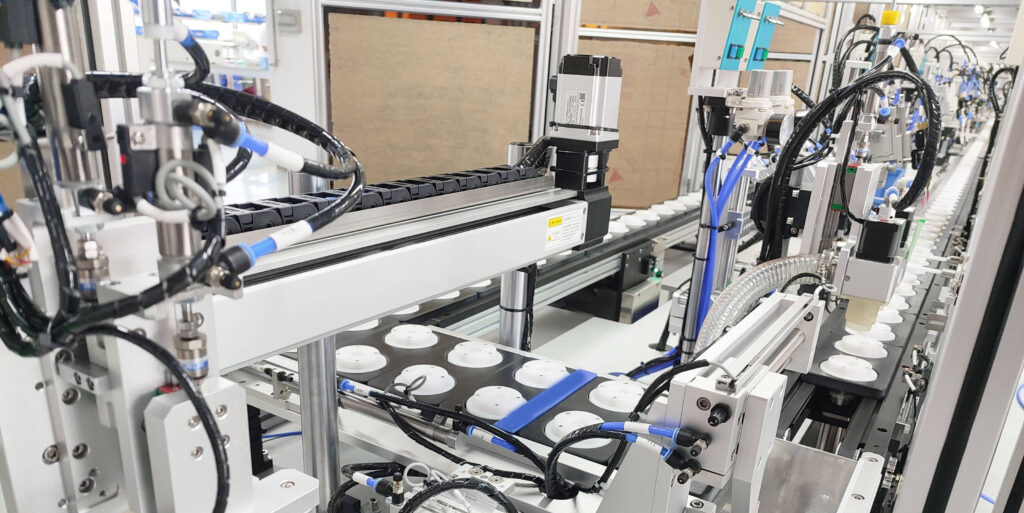Introduction
Pneumatic systems are widely used in various industries due to their reliability, efficiency, and ease of use. They use compressed air to power various mechanical components, such as cylinders, valves, and actuators, to perform tasks such as lifting, pushing, or moving objects. Pneumatic systems have several advantages over other types of systems, such as hydraulic or electric, including:
- They are less expensive to install and maintain
- They are safer to use in hazardous environments
- They are more durable and resistant to damage
However, like any mechanical system, pneumatic systems can experience problems that can affect their performance and productivity. These problems can range from minor issues, such as leaks or pressure drops, to major issues, such as electrical problems or contamination. In this article, we will discuss the common issues that can occur with pneumatic systems and how to troubleshoot them effectively. By understanding and addressing these issues, you can optimize the performance and reliability of your pneumatic system and avoid costly downtime.

I. Leaks
Leaks are one of the most common problems with pneumatic systems. They occur when compressed air escapes from the system through gaps or holes in its components. Leaks can have several negative impacts on pneumatic systems, including:
- Reduced system pressure and flow
- Increased energy consumption and costs
- Decreased system performance and productivity
- Increased wear and tear on components
To locate and fix leaks in pneumatic systems, you can use a leak detector or a soap and water solution. A leak detector is a handheld device that uses ultrasonic sound waves to detect the sound of escaping air. A soap and water solution is a simple and effective method that involves applying a solution of water and soap to the suspected area and looking for bubbles that indicate a leak. Once you have located the leak, you can fix it by tightening or replacing the affected component.
Common components that can leak in pneumatic systems include fittings, valves, hoses, and cylinders. Fittings are the connectors that join different parts of the system together, such as pipes or hoses. Valves are the devices that control the flow of air in the system, such as directional control valves or pressure relief valves. Hoses are the flexible tubes that carry compressed air from one part of the system to another. Cylinders are the mechanical devices that convert compressed air into linear or rotary motion, such as pneumatic actuators or grippers.

By regularly checking for and fixing leaks in your pneumatic system, you can ensure that it operates at optimal efficiency and productivity. In the next section, we will discuss another common issue with pneumatic systems: pressure drops.
II. Pressure drops
Pressure drops occur in pneumatic systems when the system’s pressure is lower than the required level. This can happen due to various factors such as leaks, restrictions, or inadequate compressor capacity. Pressure drops can have several negative impacts on pneumatic systems, including:
- Reduced system performance and productivity
- Increased wear and tear on components
- Increased energy consumption and costs
- Increased risk of component failure
To troubleshoot pressure drops in pneumatic systems, you can check for leaks, restrictions, and compressor capacity. First, check for leaks using a leak detector or soap and water solution, as discussed in the previous section. Next, check for restrictions in the system, such as clogged filters or valves, which can reduce the flow of air and cause pressure drops. Finally, check the compressor’s capacity and adjust it accordingly, if necessary.
Common components that can cause pressure drops in pneumatic systems include clogged filters, valves, or hoses, which can restrict the flow of air. Inadequate compressor capacity can also cause pressure drops, especially if the system is under heavy load or has increased demand. By regularly checking for and addressing pressure drops in your pneumatic system, you can ensure that it operates at optimal efficiency and productivity.

III. Slow or erratic operation
Slow or erratic operation is a common issue in pneumatic systems that can affect their performance and productivity. Slow operation occurs when the system’s components move more slowly than expected, while erratic operation occurs when the components move inconsistently or unpredictably. Slow or erratic operation can have several negative impacts on pneumatic systems, including:
- Reduced system performance and productivity
- Increased wear and tear on components
- Increased energy consumption and costs
- Increased risk of component failure
To troubleshoot slow or erratic operation in pneumatic systems, you can check for leaks, restrictions, and worn-out components. First, check for leaks using a leak detector or soap and water solution, as discussed in the previous section. Next, check for restrictions in the system, such as clogged filters or valves, which can reduce the flow of air and cause slow or erratic operation. Finally, check for worn-out components, such as valves, cylinders, or actuators, which can cause slow or erratic operation due to friction or misalignment.

Common components that can cause slow or erratic operation in pneumatic systems include valves, which can become stuck or worn-out over time, causing inconsistent or slow movement. Cylinders and actuators can also cause slow or erratic operation if they are misaligned or have worn-out seals. By regularly checking for and addressing slow or erratic operation in your pneumatic system, you can ensure that it operates at optimal efficiency and productivity.
IV. Excessive noise
Excessive noise is a common issue in pneumatic systems that can affect their performance and safety. Excessive noise can occur due to various factors, such as air leaks, loose components, or worn-out components. Excessive noise can have several negative impacts on pneumatic systems, including:
- Increased risk of hearing damage to workers
- Reduced system performance and productivity
- Increased wear and tear on components
- Increased risk of component failure
To troubleshoot excessive noise in pneumatic systems, you can check for air leaks, loose components, and worn-out components. First, check for air leaks using a leak detector or soap and water solution, as discussed in the previous sections. Next, check for loose components, such as fittings or brackets, which can vibrate and cause noise. Finally, check for worn-out components, such as mufflers or silencers, which can reduce noise levels by absorbing or redirecting air flow.

Common components that can cause excessive noise in pneumatic systems include mufflers or silencers, which can become clogged or worn-out over time, reducing their effectiveness in reducing noise levels. Loose components, such as fittings or brackets, can also cause excessive noise due to vibration. By regularly checking for and addressing excessive noise in your pneumatic system, you can ensure a safer and more productive working environment.
V. Inconsistent Pressure
Inconsistent pressure is a common issue in pneumatic systems that can affect their performance and productivity. Inconsistent pressure occurs when the system’s pressure fluctuates or varies from the required level, which can affect the system’s operation and efficiency. Inconsistent pressure can have several negative impacts on pneumatic systems, including:
- Reduced system performance and productivity
- Increased wear and tear on components
- Increased energy consumption and costs
- Increased risk of component failure
To troubleshoot inconsistent pressure in pneumatic systems, you can check for leaks, restrictions, and regulator settings. First, check for leaks using a leak detector or soap and water solution, as discussed in the previous sections. Next, check for restrictions in the system, such as clogged filters or valves, which can reduce the flow of air and cause pressure fluctuations. Finally, check the regulator settings and adjust them accordingly if necessary.

Common components that can cause inconsistent pressure in pneumatic systems include faulty regulators or pressure gauges, which can malfunction or become inaccurate over time. Leaks and restrictions can also cause inconsistent pressure by reducing the flow of air and affecting the system’s pressure levels. By regularly checking for and addressing inconsistent pressure in your pneumatic system, you can ensure that it operates at optimal efficiency and productivity.
VI. Slow Cylinder Movement
Slow cylinder movement is a common issue in pneumatic systems that can affect their performance and productivity. Slow cylinder movement occurs when the system’s cylinders move more slowly than expected, which can affect the system’s operation and efficiency. Slow cylinder movement can have several negative impacts on pneumatic systems, including:
- Reduced system accuracy and productivity
- Increased wear and tear on components
- Increased energy consumption and costs
- Decreased operator satisfaction
To troubleshoot slow cylinder movement in pneumatic systems, you can check for leaks, restrictions, and cylinder friction. First, check for leaks using a leak detector or soap and water solution, as discussed in the previous sections. Next, check for restrictions in the system, such as clogged filters or valves, which can reduce the flow of air and cause slow cylinder movement. Finally, check for cylinder friction, such as worn-out seals or misaligned pistons, which can cause slow movement due to increased friction.
Common components that can cause slow cylinder movement in pneumatic systems include worn-out seals or misaligned pistons, which can cause increased friction and slow movement. Leaks and restrictions can also cause slow cylinder movement by reducing the flow of air and affecting the system’s pressure levels. By regularly checking for and addressing slow cylinder movement in your pneumatic system, you can ensure that it operates at optimal efficiency and productivity.
VII. Excessive Moisture
Excessive moisture is a common issue in pneumatic systems that can affect their performance and reliability. Excessive moisture occurs when the system’s compressed air contains more water vapor than the system can handle, which can cause problems such as corrosion, freezing, or damage to components. Excessive moisture can have several negative impacts on pneumatic systems, including:
- Cause corrosion and rusting of system components
- Increased wear and tear on components and energy consumption
- Increased risk of component failure, such as leaks
- Increased risk of safety hazards, such as freezing or corrosion
To troubleshoot excessive moisture in pneumatic systems, you can check for leaks, drain valves, and air dryer settings. First, check for leaks using a leak detector or soap and water solution, as discussed in the previous sections. Next, check for drain valves in the system, which are designed to remove moisture from the compressed air. Finally, check the air dryer settings and adjust them accordingly if necessary.
Common components that can cause excessive moisture in pneumatic systems include faulty drain valves or inadequate air dryers, which can allow moisture to accumulate in the compressed air. Leaks in the system can also allow moisture to enter the system, especially if the system is located in a humid environment. By regularly checking for and addressing excessive moisture in your pneumatic system, you can ensure that it operates at optimal efficiency and reliability.
Inadequate air dryer capacity can also cause excessive moisture in pneumatic systems, especially if the system is under heavy load or has increased demand. Air dryers are designed to remove moisture from the compressed air by cooling and condensing it, so that it can be drained out of the system. If the air dryer is not properly sized or maintained, it can allow moisture to accumulate in the compressed air, causing problems such as corrosion or freezing.
VIII. Contamination
Contamination is a common issue in pneumatic systems that can affect their performance and reliability. Contamination occurs when foreign particles, such as dirt, dust, or oil, enter the system and interfere with its operation. Contamination can have several negative impacts on pneumatic systems, including:
- Reduced system performance and accuracy, reduced system lifespan
- Increased wear and tear on components, risk of component failure
- Lead to regulatory compliance issues
- Increased risk of safety hazards, such as fires or explosions
To troubleshoot contamination in pneumatic systems, you can check for leaks, filters, and lubrication. First, check for leaks using a leak detector or soap and water solution , as discussed in the previous sections. Next, check the filters in the system, which are designed to remove contaminants from the compressed air. If the filters are dirty or clogged, they can reduce the flow of air and allow contaminants to enter the system. Finally, check the lubrication in the system, which is designed to reduce friction and wear between components. If the lubrication is contaminated or inadequate, it can cause increased friction and wear, leading to component failure.
Common contaminants that can affect pneumatic systems include dirt, dust, and oil. Dirt and dust can enter the system through leaks or inadequate filtration, causing problems such as clogging or damage to components. Oil can also enter the system through leaks or inadequate lubrication, causing problems such as increased friction or damage to seals. By regularly checking for and addressing contamination in your pneumatic system, you can ensure that it operates at optimal efficiency and reliability.
In summary, contamination is a common issue in pneumatic systems that can affect their performance and reliability. By checking for leaks, filters, and lubrication, you can troubleshoot contamination and prevent problems such as clogging, increased friction, or component failure.
IX. Electrical Problems
Electrical problems are a common issue in pneumatic systems that can affect their performance and reliability. Electrical problems occur when there is an issue with the system’s power supply, wiring, or solenoid valves, which can cause problems such as failure to operate, erratic behavior, or damage to components. Electrical problems can have several negative impacts on pneumatic systems, including:
- Reduced system performance and productivity
- Increased wear and tear on components
- Increased risk of component failure, leaks
- Increased risk of safety hazards, such as fires or electrical shocks
To troubleshoot electrical problems in pneumatic systems, you can check for power supply, wiring, and solenoid valves. First, check the power supply to the system, including the voltage and current levels, and ensure that the system is properly grounded. Next, check the wiring in the system, including any connections, insulation, or damage to the wires. Finally, check the solenoid valves in the system, which are responsible for controlling the flow of compressed air.
Common electrical problems that can affect pneumatic systems include blown fuses, loose connections, or faulty solenoid valves. Blown fuses can occur due to power surges or overloads, and can cause the system to shut down or operate erratically. Loose connections can cause intermittent operation or failure to operate, and can be caused by vibration or inadequate fastening. Faulty solenoid valves can cause the system to operate erratically or fail to operate, and can be caused by wear and tear or damage to the valve.
In summary, electrical problems are a common issue in pneumatic systems that can affect their performance and reliability. By checking for power supply, wiring, and solenoid valves, you can troubleshoot electrical problems and prevent problems such as failure to operate, erratic behavior, or damage to components.


